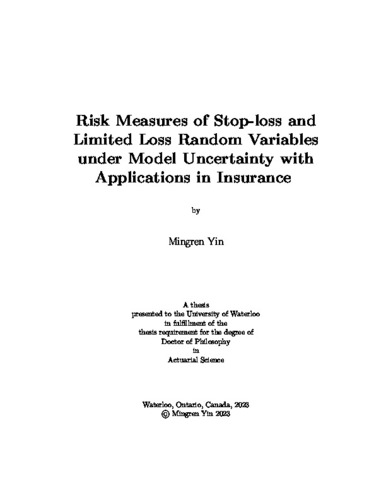| dc.description.abstract | In this thesis, our focus is on the optimization of reinsurance design, accounting for the
influence of model uncertainty. The following chapters outline our approach:
In Chapter 2, we identify the worst-case distributions for both insurers and reinsurers
by assuming that insurers and reinsurers respectively have their own uncertainty sets.
These distributions are structured to maximize their respective shares of the total loss,
assessed by a distortion risk measure. We consider a reinsurance contract structured as
a stop-loss treaty with a deductible. Our uncertainty sets adopt traditional two-moment
characteristics, incorporated with distance constraints defined using Wasserstein distance.
We provide numerical solutions for the worst-case distributions in a general scenario, along
with analytical solutions for cases when uncertainty sets only have constraints on the first
two moments of the underlying loss random variable. Based on that, we find the optimal
stop-loss reinsurance policy from the perspective of the insurer taking model uncertainty
into account.
In Chapter 3, we assume that uncertainty sets of insurers and reinsurers are defined
only by Wasserstein distance. We consider the worst-case risk measures of limited stoploss functions and determine the worst-case distributions for both insurers and reinsurers
under limited stop-loss reinsurances. In addition, by conducting numerical experiments, we
explore how the limits and deductibles of limited stop-loss reinsurances impact worst-case
risk measures for both parties.
Moving into Chapter 4, we integrate the notion of distribution ambiguity into a negotiation framework, specifically Pareto optimality. Through numerical experiments based on
results presented in Chapters 2 and 3, we investigate how the negotiation power between
parties influences the equilibrium point.
Concluding our study, the final chapter outlines potential directions for future research
and development, building upon the foundation laid out in this work. | en |

